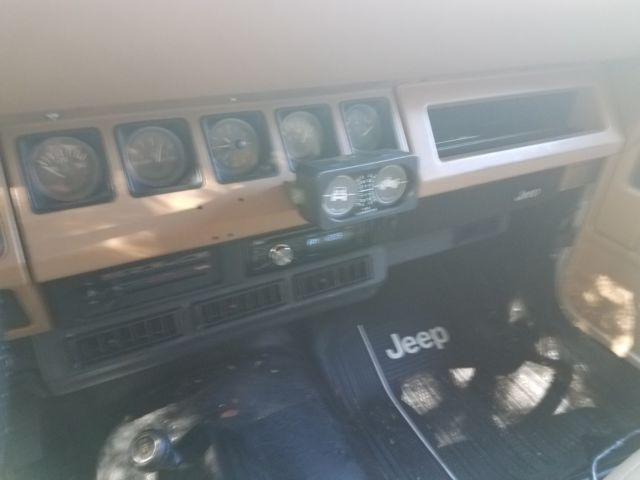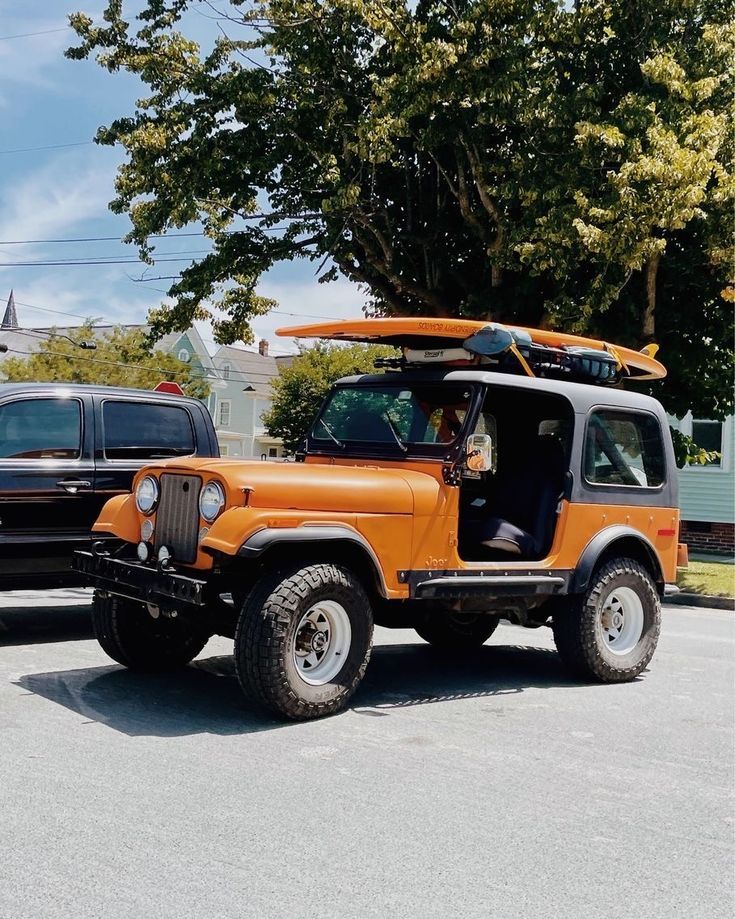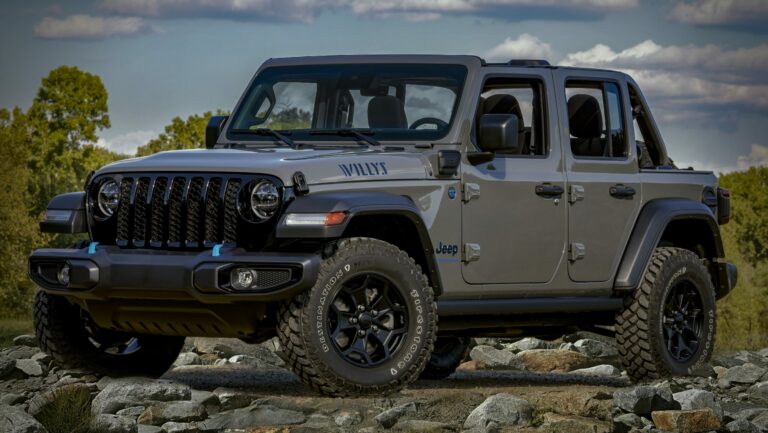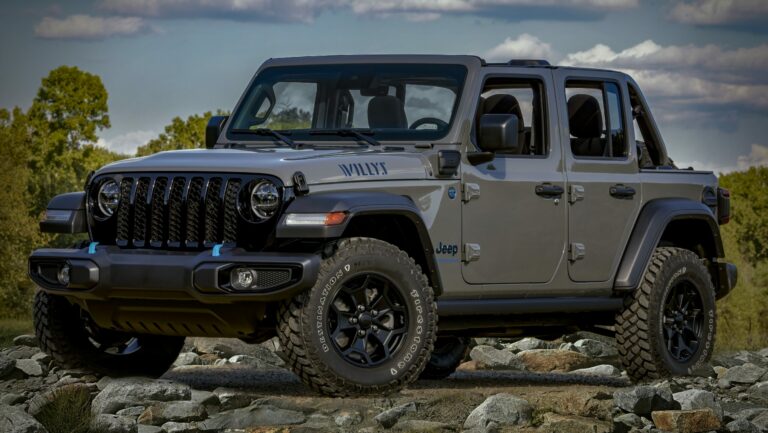Antique Jeep For Sale: Your Comprehensive Guide to Buying and Selling a Piece of History
Antique Jeep For Sale: Your Comprehensive Guide to Buying and Selling a Piece of History jeeps.truckstrend.com
There’s something undeniably captivating about an antique Jeep. More than just a vehicle, it’s a rolling testament to resilience, innovation, and a bygone era of rugged simplicity. From the iconic flat-fendered Willys MB that helped win a war, to the beloved CJ series that defined recreational off-roading, these machines carry stories in their patina and character in every rattle. For enthusiasts and collectors, the allure of an antique Jeep for sale isn’t just about transportation; it’s about owning a piece of automotive history, reliving an adventure, and connecting with a legacy of unyielding spirit.
This comprehensive guide delves into the fascinating world of antique Jeeps. Whether you’re a prospective buyer dreaming of open-air freedom and classic lines, or a current owner looking to pass on your cherished vehicle, understanding the nuances of this unique market is crucial. We’ll explore what makes these vehicles so special, what to look for, how to navigate the buying and selling process, and what to expect when you finally get behind the wheel of a true American icon.
Antique Jeep For Sale: Your Comprehensive Guide to Buying and Selling a Piece of History
Why an Antique Jeep? The Enduring Appeal
The decision to seek out an antique Jeep for sale is rarely a purely practical one. It’s often driven by a blend of nostalgia, appreciation for classic design, and a desire for an authentic, unfiltered driving experience.
- Historical Significance: Many antique Jeeps, particularly the Willys MB and Ford GPW, are direct descendants of the military vehicles that played a pivotal role in World War II. Owning one is like holding a tangible piece of history. Later models like the CJ series continued this legacy, becoming symbols of adventure and freedom.
- Timeless Design: The utilitarian, no-nonsense aesthetics of early Jeeps have a raw, honest appeal that modern vehicles often lack. Their simple lines and functional design have proven remarkably timeless.
- Mechanical Simplicity: Compared to contemporary vehicles laden with complex electronics, antique Jeeps are relatively straightforward. This makes them more accessible for owners who enjoy hands-on maintenance, tinkering, and even full restorations.
- Community and Culture: Owning an antique Jeep connects you to a vibrant global community of enthusiasts. From local clubs to online forums, there’s a wealth of shared knowledge, camaraderie, and events dedicated to these classic machines.
- Investment Potential: While not every antique Jeep will skyrocket in value, well-maintained or expertly restored examples, especially rare models, can appreciate over time, making them a potentially sound investment alongside a passion project.
- The Driving Experience: There’s nothing quite like the feel of an old Jeep – the wind in your hair, the distinctive engine sound, and the unassisted steering that truly connects you to the road (or trail). It’s an immersive experience that modern vehicles simply cannot replicate.

Defining ‘Antique’: What Qualifies?

The term "antique" can be somewhat fluid when it comes to vehicles, often varying by state regulations for titling and registration. Generally, an antique vehicle is one that is at least 25 to 45 years old, depending on the specific definition used. For Jeeps, this typically encompasses:
- Willys MB / Ford GPW (1941-1945): The original "Jeep" military vehicles. Highly sought after for their historical significance.
- Willys CJ-2A (1945-1949): The first civilian Jeep, known for its "Agri-Jeep" features and post-war utility.
- Willys CJ-3A (1949-1953): An evolution of the 2A, with a slightly revised windshield and more civilian-friendly features.
- Willys CJ-3B (1953-1968): Distinctive for its taller hood to accommodate the new "Hurricane" F-head engine.
- CJ-5 (1955-1983): The longest-running CJ model, evolving significantly over its production run. Early CJ-5s are firmly in the antique category.
- Early CJ-6 (1955-1975): A stretched version of the CJ-5.
- Willys Wagoneer / Jeep Wagoneer (SJ) (1963-1991): While later models are "classic," the early "SJ" Wagoneers, particularly the two-door versions and those with unique features, are certainly antique.
- Jeep FC (Forward Control) (1956-1965): Unique cab-over-engine designs.
- Jeepster Commando (1966-1973): A stylish and versatile model.

When searching for an antique Jeep for sale, be aware that models from the 1970s and early 1980s, especially the CJ-7, are often referred to as "classic" rather than strictly "antique," though they are rapidly approaching the antique threshold.
The Buyer’s Journey: What to Look For in an Antique Jeep
Acquiring an antique Jeep is an exciting prospect, but it requires careful consideration. Not all antique Jeeps are created equal. Understanding what to look for will help you make an informed decision and avoid costly surprises.
Condition Categories:
Antique Jeeps are typically categorized by their condition, which directly impacts their price and the level of work required.
- Project Vehicle: Requires significant work (engine, body, frame, electrical, interior). Often non-running. Best for experienced restorers or those with a large budget for professional work.
- Driver Quality: Running and driving, but may have cosmetic flaws, minor mechanical issues, or need some attention. Suitable for someone who wants to drive it immediately and work on it gradually.
- Restored: Has undergone a professional or high-quality amateur restoration. Generally in excellent condition, often close to original specifications.
- Concours Quality: Flawlessly restored to factory specifications or better. Typically trailer queens, not daily drivers, intended for show. These command the highest prices.
Key Inspection Points:
- Frame Rust: This is paramount. Jeeps are notorious for frame rust, especially in the areas around the leaf spring mounts, body mounts, and cross members. Get underneath with a flashlight and a small hammer to tap suspicious areas.
- Body Rust: Check common rust spots: floorboards, fenders (especially where they meet the body), rocker panels, tailgate, and under the battery tray.
- Engine and Drivetrain:
- Cold Start: Ideally, see the vehicle start from cold. Listen for knocking, excessive smoke (blue/black/white), or unusual noises.
- Fluid Leaks: Check for oil, coolant, or transmission fluid leaks.
- Transmission/Transfer Case: Test all gears (including 4WD high and low if applicable). Listen for grinding or difficulty shifting.
- Axles: Check for leaks around the differential covers and wheel hubs.
- Electrical System: Test all lights, gauges, wipers, heater, and horn. Look for frayed wires or amateur wiring jobs.
- Suspension and Steering: Check for worn bushings, loose steering, or excessive play in the steering wheel. Look for bent or damaged leaf springs.
- Brakes: Test pedal feel (should be firm, not spongy). Check for pulling to one side. Inspect brake lines and master cylinder for leaks.
- Documentation: Always ask for the title (ensure it’s clean and matches the VIN), past registration, and any service records or restoration receipts.
- Authenticity vs. Modification: Decide if you want an original, historically accurate vehicle or one with modern upgrades (e.g., power steering, disc brakes, engine swaps). Modifications can enhance usability but may detract from originality value.
The Seller’s Guide: Preparing Your Antique Jeep for Market
If you’re considering putting your antique Jeep for sale, proper preparation can significantly impact its appeal and final selling price.
- Honest Assessment: Objectively evaluate your Jeep’s condition. Is it a project, a driver, or a show queen? Be realistic about its flaws and strengths.
- Gather Documentation: Collect all titles, registration papers, service records, restoration receipts, original manuals, and any historical photos. This adds immense value and transparency.
- Clean and Detail: A clean vehicle presents much better. Wash, vacuum, and wipe down surfaces. Clean the engine bay (carefully!). Even a project Jeep looks better without layers of dirt.
- Minor Repairs & Maintenance: Address small, inexpensive issues that could deter buyers. Fix a broken light, top off fluids, ensure tires are properly inflated. Don’t overspend on major repairs unless they significantly increase value or make the vehicle runnable.
- High-Quality Photography: This is crucial. Take numerous clear, well-lit photos from various angles (exterior, interior, engine bay, undercarriage, specific features, and any flaws). Videos are even better for demonstrating engine sound or driving.
- Craft a Detailed Description: Be thorough and honest. Include:
- Year, Make, Model (e.g., 1946 Willys CJ-2A)
- Mileage (if known, but often irrelevant for antiques)
- Engine type and transmission
- Known history, provenance, and restoration details
- List of original components and any modifications/upgrades
- Detailed description of condition, including any rust or mechanical issues
- Your asking price and contact information.
- Pricing Strategy: Research similar models in comparable condition that have recently sold. Online forums, auction results, and classic car valuation guides can help. Factor in rarity, originality, and location. Be prepared to negotiate, but know your bottom line.
Where to Find (or Sell) Antique Jeeps
The market for antique Jeeps is diverse, offering several avenues for both buyers and sellers.
- Online Marketplaces:
- Dedicated Classic Car Sites: Bring a Trailer, Hemmings, ClassicCars.com, Autotrader Classics. These often feature higher-quality listings.
- Auction Sites: eBay Motors (be cautious and verify sellers/listings thoroughly).
- General Classifieds: Craigslist, Facebook Marketplace. Can yield bargains but require more due diligence.
- Specialized Forums & Clubs: Jeep forums (e.g., The CJ-2A Page, G503 for military Jeeps, EarlyCJ5.com) and classic Jeep clubs often have "for sale" sections. These communities are knowledgeable and can offer valuable insights.
- Classic Car Dealers: Reputable dealers specializing in vintage vehicles often have a selection of antique Jeeps. They typically offer inspected vehicles but at a higher price point.
- Auctions: Major classic car auctions (e.g., Mecum, Barrett-Jackson) occasionally feature high-end, restored antique Jeeps. Local auctions can also be a source, but require quick decision-making and expertise.
- Car Shows & Swap Meets: Great places to see vehicles in person, meet owners, and find parts. Many owners list their vehicles for sale at these events.
- Word of Mouth: Let friends, family, and fellow enthusiasts know you’re looking (or selling). The classic car community is often tightly knit.
Understanding the Market Value: Factors Influencing Price
The price of an antique Jeep for sale can vary wildly, from a few thousand dollars for a non-running project to six-figure sums for concours-level restorations of rare models. Key factors include:
- Rarity & Model: Military Jeeps (MB/GPW) and early CJ models (2A/3A) generally command higher prices due to their historical significance. Some unique variants or low-production models are also more valuable.
- Originality: Highly original, unmolested examples with matching numbers (engine, frame, body) are often more valuable to serious collectors than heavily modified ones.
- Condition: As discussed, this is the single biggest factor. A perfectly restored vehicle will fetch many times the price of a rusty project.
- Provenance/History: A documented history of ownership, military service, or professional restoration adds significant value.
- Geographic Location: Prices can vary by region depending on local demand and climate (e.g., rust is less common in dry climates).
- Features & Options: Desirable period-correct accessories (PTO, rare tops, heaters, winches) can increase value.
- Market Demand: The overall popularity of a specific model at a given time can influence prices.
Sample Antique Jeep Price Guide (Estimates)
Please note: These are broad estimates and actual prices can vary significantly based on specific model year, rarity, documented history, original features, and current market demand. Always conduct thorough research for specific models.
| Model / Year Range | Condition: Project (Non-Running) | Condition: Driver Quality | Condition: Restored | Condition: Concours Quality |
|---|---|---|---|---|
| Willys MB / Ford GPW (WWII Military) | $8,000 – $18,000 | $20,000 – $40,000 | $45,000 – $80,000 | $85,000 – $150,000+ |
| Willys CJ-2A (1945-1949) | $3,000 – $8,000 | $10,000 – $25,000 | $30,000 – $50,000 | $55,000 – $80,000 |
| Willys CJ-3A/3B (1949-1968) | $2,500 – $7,000 | $8,000 – $20,000 | $25,000 – $45,000 | $48,000 – $70,000 |
| Early CJ-5 (1955-1970s) | $2,000 – $6,000 | $7,000 – $18,000 | $20,000 – $40,000 | $42,000 – $65,000 |
| Early Willys Wagoneer (SJ) (1963-1970s) | $2,000 – $7,000 | $8,000 – $22,000 | $25,000 – $50,000 | $55,000 – $90,000+ |
Legal and Logistical Considerations
Purchasing an antique Jeep for sale involves more than just the handshake.
- Titling and Registration: Laws vary by state/country. You may need special antique or classic vehicle plates, which can come with benefits like reduced registration fees or emissions exemptions. Ensure the VIN on the title matches the vehicle.
- Insurance: Standard auto insurance may not be suitable. Look into specialized classic car insurance, which often provides "agreed value" coverage, protecting your investment for its true worth rather than depreciated value.
- Transportation: Unless the Jeep is a reliable driver, budget for shipping costs. Enclosed transport is recommended for restored vehicles to protect them from the elements.
- Pre-Purchase Inspection (PPI): For any significant purchase, especially if you’re not an expert, hire a qualified mechanic specializing in vintage vehicles to perform a PPI. It’s a small investment that can save you thousands.
- Sales Contract: Always use a written sales contract, even for private sales, detailing the vehicle, price, condition (as-is, etc.), and terms.
Common Pitfalls and How to Avoid Them
The journey to owning an antique Jeep for sale can have its bumps. Awareness of common pitfalls helps.
- Hidden Rust: Rust is the silent killer of antique vehicles. Always inspect thoroughly, and if possible, have a professional do it. Don’t be afraid to poke and prod.
- Unrealistic Expectations (Cost & Maintenance): An antique Jeep, even a restored one, will require more maintenance and attention than a modern vehicle. Parts may be harder to find, and repairs might be more specialized. Factor in ongoing costs beyond the purchase price.
- Lack of Parts: While many common parts for popular models (e.g., CJ-5) are reproduced, rare components for obscure models can be very difficult or impossible to find. Research parts availability for your desired model.
- "As-Is" Sales: Most antique vehicle sales are "as-is," meaning the seller is not liable for issues discovered after the sale. This reinforces the need for a thorough inspection.
- Over-Restoration vs. Patina: Deciding whether to restore to factory new or preserve original "patina" (the aged look) is a personal choice, but know that over-restoring a vehicle that would be more valuable with its original character can be a mistake for collectors.
Conclusion: Driving a Legacy
The quest for an antique Jeep for sale is more than just a transaction; it’s the beginning of a relationship with a machine that embodies history, freedom, and an enduring spirit of adventure. Whether you envision conquering trails, cruising to car shows, or simply enjoying the unparalleled satisfaction of driving a truly unique vehicle, the right antique Jeep can deliver an experience unlike any other.
Approach the process with patience, thorough research, and a clear understanding of your goals and budget. With the right preparation, both buyers and sellers can navigate this vibrant market successfully, ensuring these timeless icons continue to roll for generations to come. Owning an antique Jeep isn’t just about driving; it’s about preserving a legacy, and becoming a part of the rich story that began with the very first Willys.
Frequently Asked Questions (FAQ) About Antique Jeeps
Q1: What’s the difference between a "classic" and an "antique" Jeep?
A1: Definitions vary by state/country, but generally, a "classic" vehicle is 20-25 years old, while an "antique" vehicle is 25-45+ years old. For Jeeps, anything pre-1980s is typically considered antique, while 1980s-early 2000s models are often classic.
Q2: Are parts readily available for antique Jeeps?
A2: For popular models like the Willys MB, CJ-2A, CJ-5, and early Wagoneers, many reproduction parts are available from specialized suppliers. However, very specific or rare components for obscure models can be challenging to find and may require custom fabrication or extensive searching.
Q3: Can I daily drive an antique Jeep?
A3: While some antique Jeeps are restored to be reliable drivers, most are not ideal for daily commuting. They lack modern safety features, comfort, and fuel efficiency. They often require more frequent maintenance and are best enjoyed for recreational driving, short trips, or off-road adventures.
Q4: How do I deal with rust on an antique Jeep?
A4: Rust is a major concern. For minor surface rust, sanding and repainting might suffice. For structural rust (frame, critical body mounts), professional welding and fabrication are often required. Always prioritize frame integrity. A pre-purchase inspection is crucial to assess rust severity.
Q5: How do I insure an antique Jeep?
A5: Standard auto insurance policies may not cover the true value of an antique vehicle. Seek out specialized classic car insurance providers (e.g., Hagerty, Grundy, American Collectors Insurance). They offer "agreed value" policies, meaning you and the insurer agree on the vehicle’s value upfront, ensuring you’re paid that amount in case of a total loss.
Q6: Is an antique Jeep a good investment?
A6: For most, an antique Jeep is a passion purchase, not a primary investment. However, well-maintained, original, or professionally restored examples of rare and historically significant models (like the Willys MB) can appreciate in value over time. Driver-quality or project vehicles are less likely to see significant financial returns, but offer immense enjoyment.
Q7: What is "matching numbers"?
A7: "Matching numbers" refers to a vehicle where key components (like the engine, transmission, and frame) bear serial numbers that match the vehicle’s original factory specifications for that specific unit. This indicates originality and can significantly increase a vehicle’s value to collectors.
Q8: What’s the average fuel economy of an antique Jeep?
A8: Don’t expect modern fuel economy. Most antique Jeeps, with their older engine designs and less aerodynamic shapes, will get anywhere from 8 to 15 miles per gallon, depending on the model, engine, and driving conditions.



